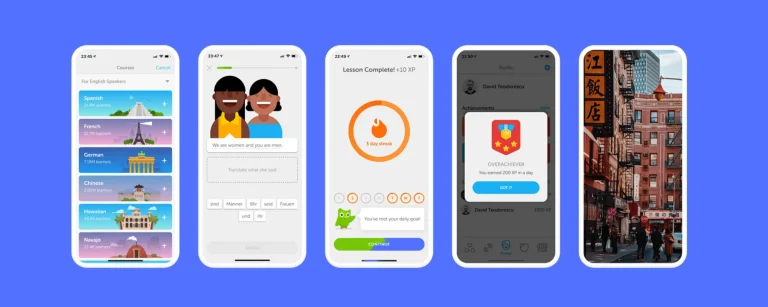Great user interface and user experience have to be inclusive and accessible not only because it’s a requirement but also because it’s the right thing to do. It implies that accessibility in UI/UX design confirms that digital products are usable to all, including those with impairments. Such inclusivity improves user experience, increases your reach, and aligns with the law.
In this article, we will discuss the importance of this area in UI/UX design, principles that guide accessible design, common accessibility issues, and best practices to create inclusive digital products.
Accessibility In UI/UX Design
In other words, access within the context of UI/UX design is general to designs of digital products like websites and applications in a manner that everybody is included and not sidelined on the basis of different kinds of disabilities—whether visual, hearing, cognitive, or motor-related. This means that accessible design will ensure that, in literally any interaction or content, people with different kinds of disabilities can use your content.
Inclusive Design Philosophy: Accessibility is part of the philosophy of inclusive design, which focuses on the development of products considering as many needs of the user as possible. It not only avails the use of the product to users with disability but also offers other people a much-improved level of usability.
Legal and Ethical Considerations: There are so many laws and regulations in lots of countries, like the Americans with Disabilities Act (ADA) and the Web Content Accessibility Guidelines (WCAG), that want digital products to be accessible. Non-compliance will also lead to a lawsuit and hurt the brand reputation.

Principles Of Accessible Design
To develop accessible digital products, the following are some expected key principles for designers to follow:
- Perceivable: More specifically, information and user interface components must be represented in a way that the user can perceive. This includes text alternatives for all non-text content, which also allows for easier alteration and perception of the information represented in any sensory modality other than that used.
- Operable: User interface components and navigation must be operable. Basically, it’s covered by making all functionality available by keyboard and allowing enough time to read and use content, as well as specifying ways to do this.
- Understandable: Information and the operation of the user interface shall be understandable. This can be achieved by making text readable and understandable, making the operation of user interfaces predictable and consistent, and helping users avoid and correct errors.
- Robust: Content must be robust enough to stand the interpretation of any user agent-dependent, including assistive technologies. This calls for the implementation of standards and best practices.
Common Accessibility Problems
Many digital products have common accessibility problems that can be easily fixed by careful design practices:
- Missing Alt Text Images: Images without alt text are not read by a screen reader to convey the content of the image to the visually impaired. Add alt text to images that explicitly describe the images.
- Low Color Contrast: Poor contrast between the text and background adversely affects users while reading the content. Ensure users with low vision can see high-contrast colors.
- Non-Keyboard Accessible Navigation: Some navigate with the keyboard and not with the mouse. Ensure all interactive elements can be accessed and operated through the keyboard.
- Inaccessible Forms: Forms without appropriate labels, instructions, and error messages can make usage for the majority of disabled users a nightmare. Develop clear labels and instructions, and include error messages that enable users to understand their mistakes clearly and be able to correct them.
- Lack of Reponsive Design: Non-responsive designs will be hard to navigate on all types of devices and especially those users with motor disabilities. Ensure that the design is responsive and works with any screen size.
Best Practices Of Accessibility In UI/UX Design
Here are some best practices to be incorporated into your process of making digital products accessible:
- Conduct Accessibility Audits: Regularly check your digital products using tools like WAVE, Axe or Lighthouse—out of many others—in order to detect issues concerning accessibility and improve upon them.
- Involve Users with Disabilities: Engage users with disabilities in design and testing. They can provide some feedback worth a lot when it comes to the identification of barriers.
- ARIA landmarks: Define areas of the page using ARIA landmarks for easier navigation for screen reader users.
- Skip links: These should be implemented to allow the user to bypass same content in repetition and to proceed straight to the main content.
- Keyboard accessibility: Make sure all the interactive elements are accessible and operable with the keyboard. Test your product using only a keyboard.
- Responsive designs: Design your product to become responsive; i.e., it’s usable with different devices and different screen dimensions.
- Sufficient color contrast: Contrast Checker is really a perfect tool that ensures appropriate contrast of your text over the background.
- Write descriptive link text: Avoid making the text of the link vague. Use descriptive text that will tell the users what is on the other side of the link.
Conclusion
Accessibility in the field of UI/UX design means building an all-inclusive digital experience purposefully for everyone who interacts with it, able-bodied or differently abled. Abiding by the principles of accessibility, taking into account common shortcomings and best practices, make a DAP functional for all.
When accessibility is treated as your first-class citizen in your design process, you’re assuring a better user experience, opening work to the largest possible audience, and, in many cases, meeting the law. The bottom line is that accessible design is just good design.







